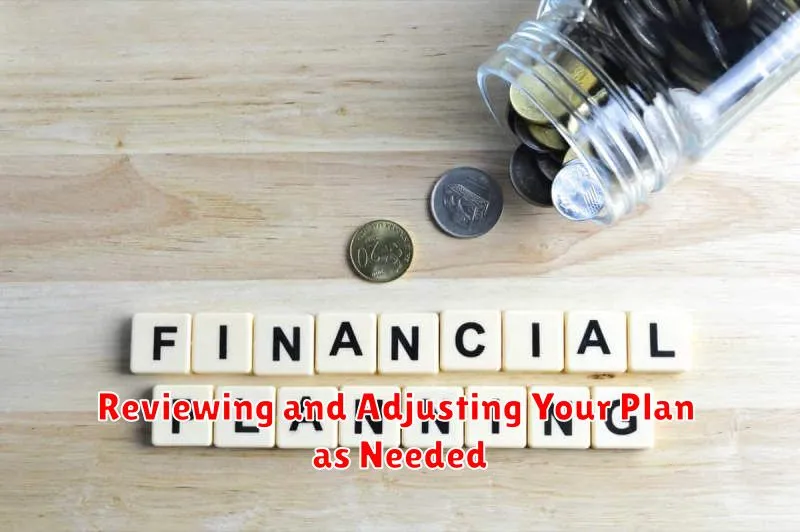Life is full of major life events, from getting married and buying a home to having children and retiring. These events are exciting and rewarding, but they also come with significant financial implications. Planning ahead can help you manage these expenses and avoid unnecessary stress. A well-crafted personal finance plan can ensure you are financially prepared for life’s inevitable milestones, allowing you to enjoy these experiences without the worry of financial burden.
This guide will explore the key elements of planning for major life events through personal finance. We will delve into effective strategies for budgeting, saving, and investing to ensure you are financially equipped to navigate these life transitions smoothly. By learning how to manage your finances effectively, you can gain the confidence and peace of mind to tackle any life event with ease.
Identifying Major Life Events
Major life events, also known as life transitions, are significant occurrences that have a profound impact on a person’s life. These events can be both positive and negative, but they all share the characteristic of bringing about change and requiring adaptation. Recognizing and navigating these transitions is crucial for personal growth and well-being.
Here are some common examples of major life events:
- Marriage: Entering into a committed relationship with another person significantly alters one’s life, including financial, social, and emotional aspects.
- Divorce: The dissolution of a marriage can lead to significant upheaval, requiring adjustments to one’s lifestyle, support system, and legal status.
- Birth of a child: The arrival of a child brings immense joy but also significant responsibility, demanding adjustments to priorities, finances, and daily routines.
- Death of a loved one: Grief and loss are profound emotions that accompany the death of a loved one, requiring time for healing and processing the emotional impact.
- Job loss: Losing a job can be a stressful experience, requiring adaptation to financial changes, seeking new employment opportunities, and navigating potential emotional distress.
- Retirement: Leaving the workforce marks a major life transition, requiring adjustments to daily routine, social interactions, and financial planning.
- Moving: Relocating to a new city or neighborhood can impact various aspects of life, including social connections, work opportunities, and sense of belonging.
- Major illness or injury: Experiencing a serious health event can profoundly affect one’s physical and mental well-being, demanding adjustments to lifestyle and treatment plans.
It’s important to note that the impact of major life events can vary greatly depending on individual circumstances, personal resilience, and support systems. What might be a minor event for one person could be a significant life transition for another.
Recognizing major life events is essential for navigating the changes they bring. By understanding the challenges and opportunities associated with these transitions, individuals can better prepare themselves for adaptation, growth, and maintaining well-being.
Financial Implications of Each Event
The financial implications of each event can vary widely depending on the specific circumstances. However, some common factors that can influence financial outcomes include the severity of the event, the location of the event, and the availability of resources.
For example, a natural disaster such as a hurricane or earthquake can result in significant financial losses due to property damage, business disruptions, and the need for rebuilding. The financial impact of a natural disaster can be even more severe in developing countries, where resources are often limited and infrastructure is less resilient.
Another example is a pandemic, which can have a significant impact on the global economy. Pandemics can lead to widespread illness, death, and economic disruption. Businesses may be forced to close, supply chains can be disrupted, and travel restrictions can have a devastating impact on tourism.
In addition to natural disasters and pandemics, other events that can have financial implications include political instability, war, and climate change.
It is important to consider the potential financial implications of each event in order to make informed decisions about how to mitigate risks and protect assets. This includes having a comprehensive disaster recovery plan, diversifying investments, and taking steps to adapt to a changing climate.
Setting Financial Goals for Each Milestone

Life is full of milestones, from graduating high school to buying a house to retiring. Each milestone comes with its own set of financial needs and goals. Setting financial goals for each milestone is crucial to ensuring that you have the resources you need to achieve your dreams.
Here are some tips on how to set financial goals for each milestone:
1. Identify Your Milestones
The first step is to identify the milestones you want to achieve. This might include:
- Graduating from college
- Getting married
- Buying a home
- Starting a family
- Retiring
Once you have a list of milestones, you can start to think about the financial goals associated with each one.
2. Set Specific, Measurable, Achievable, Relevant, and Time-Bound (SMART) Goals
When setting financial goals, it’s important to make them SMART.
- Specific: What exactly are you saving for? (E.g., “Save $50,000 for a down payment on a house.”)
- Measurable: How much money do you need to save? (E.g., “$50,000”)
- Achievable: Is your goal realistic based on your income and expenses? (E.g., “Save $1,000 per month for the next five years.”)
- Relevant: Does this goal align with your values and overall financial plan?
- Time-Bound: When do you want to reach your goal? (E.g., “Save $50,000 by December 2025.”)
3. Create a Budget
Once you have a list of financial goals, you need to create a budget to help you reach them. This involves tracking your income and expenses and identifying areas where you can cut back or save more.
4. Track Your Progress
It’s important to track your progress toward your financial goals. This will help you stay motivated and make adjustments as needed. Consider using a spreadsheet, budgeting app, or financial planner to monitor your savings and progress.
5. Review and Adjust Your Goals
Life is unpredictable, and your financial goals may need to change over time. Review your goals regularly and adjust them as needed.
6. Consider Investing
Investing can help you grow your money faster and reach your financial goals sooner. Consider investing in a diversified portfolio of stocks, bonds, and other assets.
7. Seek Professional Advice
If you are struggling to set financial goals or need help with your financial plan, consider consulting with a financial advisor. They can provide personalized guidance and help you develop a strategy that aligns with your needs and goals.
Setting financial goals for each milestone is essential for achieving your dreams. By following these tips, you can create a financial plan that will help you reach your goals and achieve financial security. Remember to be patient, consistent, and stay focused on your goals, and you will be well on your way to achieving your financial dreams.
Building a Solid Emergency Fund
Life is full of unexpected events, and it’s essential to be prepared for them. A solid emergency fund can provide a safety net to navigate these challenges without derailing your financial goals. It can help you cover unexpected expenses, such as medical bills, car repairs, job loss, or home repairs. It can also offer peace of mind, knowing you have a financial buffer to fall back on.
So, how much should you aim for? Experts generally recommend having 3-6 months of living expenses saved in your emergency fund. This amount can fluctuate depending on your individual circumstances, such as your income, dependents, and level of risk tolerance.
Building Your Emergency Fund: A Step-by-Step Guide
- Assess your current financial situation. Start by understanding your monthly expenses, including rent/mortgage, utilities, groceries, transportation, and other essentials. Once you know your monthly outflow, you can determine the amount you need for your emergency fund.
- Set realistic savings goals. Divide the amount you need for your emergency fund by the number of months you have to reach your goal. This will give you a monthly savings target.
- Automate your savings. One of the best ways to build your emergency fund is to automate your savings. Set up automatic transfers from your checking account to your savings account on a regular basis. Even small, consistent contributions will add up over time.
- Look for opportunities to cut expenses. Review your spending habits and look for areas where you can reduce costs. This might involve finding cheaper alternatives, negotiating bills, or simply being more mindful of your purchases.
- Consider a side hustle. If you need to boost your savings efforts, consider taking on a side hustle or gig. This can provide an extra income stream to help you reach your emergency fund goals faster.
- Stay disciplined. Building an emergency fund requires discipline and consistency. It’s tempting to dip into your savings when unexpected expenses arise, but try to resist the urge. Your emergency fund is there for true emergencies, not for everyday spending.
The Importance of a Solid Emergency Fund
A solid emergency fund offers numerous benefits, including:
- Financial security: An emergency fund provides a safety net, protecting you from unexpected expenses and helping you avoid going into debt.
- Reduced stress: Knowing you have a financial buffer can reduce stress and anxiety, especially during difficult times.
- Better decision-making: With an emergency fund in place, you can make more rational decisions when unexpected events occur, rather than acting impulsively out of fear.
- Increased financial freedom: Having an emergency fund gives you more financial flexibility and allows you to pursue your goals with confidence.
Building an emergency fund is an essential step towards financial well-being. By following these steps, you can create a financial cushion that can help you weather any storm. Remember, a solid emergency fund is an investment in your peace of mind and financial security.
Saving for Retirement from an Early Stage
Retirement may seem like a distant future, especially when you’re just starting your career. But the truth is, the earlier you begin saving for retirement, the better. It gives your money more time to grow through the power of compounding. This means your initial investment will not only earn interest but also interest on the interest earned, leading to significant growth over time.
Here’s why saving early is crucial:
- Time is Your Ally: The longer your money is invested, the more time it has to grow. Early investments benefit from the magic of compounding, allowing your savings to snowball over the years.
- Smaller Contributions Add Up: Even small contributions can make a big difference when started early. With time, these small amounts accumulate into a substantial retirement nest egg.
- Reduced Risk: Starting early gives you the flexibility to invest in a more diversified portfolio, including higher-risk, potentially higher-return options, which can help you achieve your retirement goals.
- Financial Security: Building a solid retirement fund provides peace of mind. Knowing you have financial security in your later years can significantly reduce stress and enable you to enjoy your golden years.
It’s never too early to start thinking about your future. Here are some practical tips for starting your retirement savings journey:
- Maximize Employer Matching Contributions: If your employer offers a 401(k) or similar plan with matching contributions, take full advantage of this opportunity. It’s like getting free money for retirement.
- Set Realistic Goals: Determine how much you need to save for a comfortable retirement. Financial calculators and advisors can assist in this process.
- Automate Savings: Set up automatic transfers from your checking account to your retirement account. This makes saving consistent and effortless.
- Start Small: Don’t feel overwhelmed by the thought of saving large sums. Begin with a small, manageable amount and gradually increase your contributions over time.
Saving for retirement early is a wise and rewarding decision. It lays the foundation for a secure and enjoyable future. Take the first step today and watch your retirement savings grow over time.
Protecting Yourself with Insurance

Insurance is an essential aspect of financial planning, providing a safety net against unexpected events that can cause significant financial strain. It offers peace of mind by transferring the risk of financial loss from you to an insurance company, ensuring you have the resources to cope with unforeseen circumstances.
Types of Insurance
There are various types of insurance available, each catering to specific needs and risks. Some common types include:
- Health Insurance: Covers medical expenses, including hospital stays, surgeries, and medications.
- Auto Insurance: Protects you and your vehicle in case of accidents, theft, or damage.
- Homeowners/Renters Insurance: Safeguards your home and belongings from damage or loss caused by fire, natural disasters, or theft.
- Life Insurance: Provides financial support to your beneficiaries upon your death, helping them cover expenses and maintain their lifestyle.
- Disability Insurance: Offers income replacement if you become unable to work due to an illness or injury.
Benefits of Insurance
Insurance offers numerous benefits, including:
- Financial Protection: Insurance acts as a financial cushion, shielding you from significant financial losses.
- Peace of Mind: Knowing you have insurance coverage can provide peace of mind and reduce stress during difficult times.
- Risk Management: Insurance helps you manage risks effectively by transferring the burden of potential financial losses.
- Legal Protection: Some types of insurance, such as liability insurance, provide legal protection in case of lawsuits.
Choosing the Right Insurance
Selecting the right insurance policies is crucial. Consider the following factors when making decisions:
- Your Needs and Risks: Assess your individual needs and the risks you face.
- Coverage Amount: Choose coverage amounts that adequately protect you and your assets.
- Premiums: Compare premiums from different insurance companies and find the best value for your budget.
- Deductibles: Understand the deductible amount you’ll pay before insurance coverage kicks in.
- Claims Process: Consider the insurance company’s reputation for handling claims efficiently.
Insurance is a vital investment in your financial well-being. By understanding the different types of insurance and choosing the right policies, you can protect yourself and your family from unforeseen events and ensure a secure financial future.
Estate Planning and Its Importance
Estate planning is the process of preparing for the management and distribution of your assets after your death. It’s a crucial aspect of financial planning that ensures your wishes are carried out and your loved ones are taken care of. While it might seem like something for the wealthy or elderly, it’s vital for everyone regardless of age or financial status.
Here are some key reasons why estate planning is essential:
- Protecting Your Loved Ones: Estate planning allows you to designate who will inherit your assets, ensuring that your property and possessions are distributed according to your wishes. It helps avoid potential disputes and conflicts among family members.
- Minimizing Taxes: Proper estate planning can help reduce estate taxes, saving your beneficiaries from a significant financial burden. Strategies like trusts and charitable contributions can help minimize the tax impact on your estate.
- Protecting Your Children: If you have minor children, estate planning allows you to appoint a guardian who will care for them and manage their inheritance until they reach adulthood. This ensures their well-being and financial security.
- Avoiding Probate: Probate is a legal process that can be time-consuming, costly, and public. Estate planning tools like living trusts can help avoid probate, allowing your assets to pass to your beneficiaries more efficiently.
- Planning for Disability: Estate planning includes preparing for unexpected events, such as disability. You can appoint a power of attorney to manage your finances and make medical decisions for you if you are unable to do so yourself.
Estate planning is a multifaceted process that requires careful consideration. Consulting with an estate planning attorney is essential to ensure that your plan is tailored to your specific needs and circumstances. They can help you navigate the complexities of estate laws and guide you in making the best decisions for your future and the well-being of your loved ones.
Reviewing and Adjusting Your Plan as Needed

It’s important to review and adjust your plan as needed. Things change, and your plan should adapt to those changes. This might mean making small tweaks or big changes. Don’t be afraid to adjust your plan to meet your current needs. Here are some things to keep in mind when reviewing and adjusting your plan:
- What has changed since you created your plan? Have your goals changed? Has your situation changed? Have you learned something new that makes you want to change your plan?
- Is your plan still working? Are you making progress toward your goals? Are you happy with how your plan is working? If not, it might be time to make some changes.
- What are your options for adjusting your plan? What are the possible consequences of making different changes? What are the pros and cons of each option?
Once you’ve considered all of these factors, you can start to adjust your plan. Be sure to make your changes in a way that is sustainable and achievable. It’s also important to document your changes so that you can track your progress.
By reviewing and adjusting your plan as needed, you can ensure that you are on track to achieve your goals. It takes commitment and effort to create and stick to a plan, but it’s well worth it in the end.

